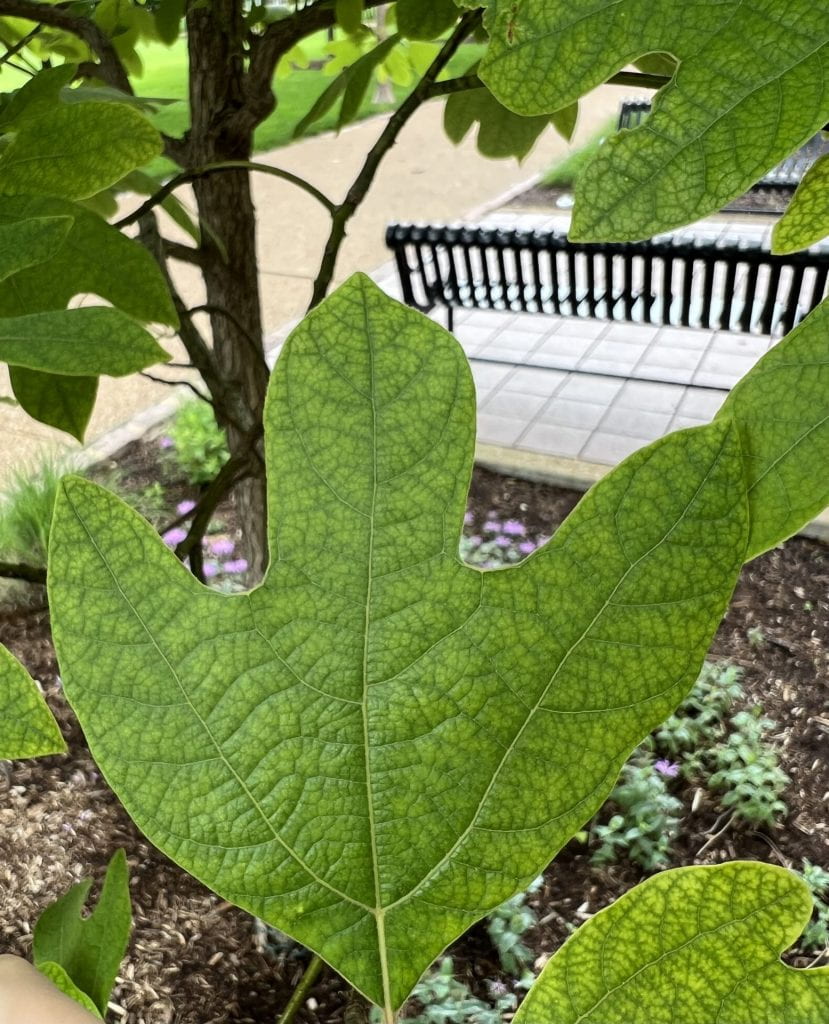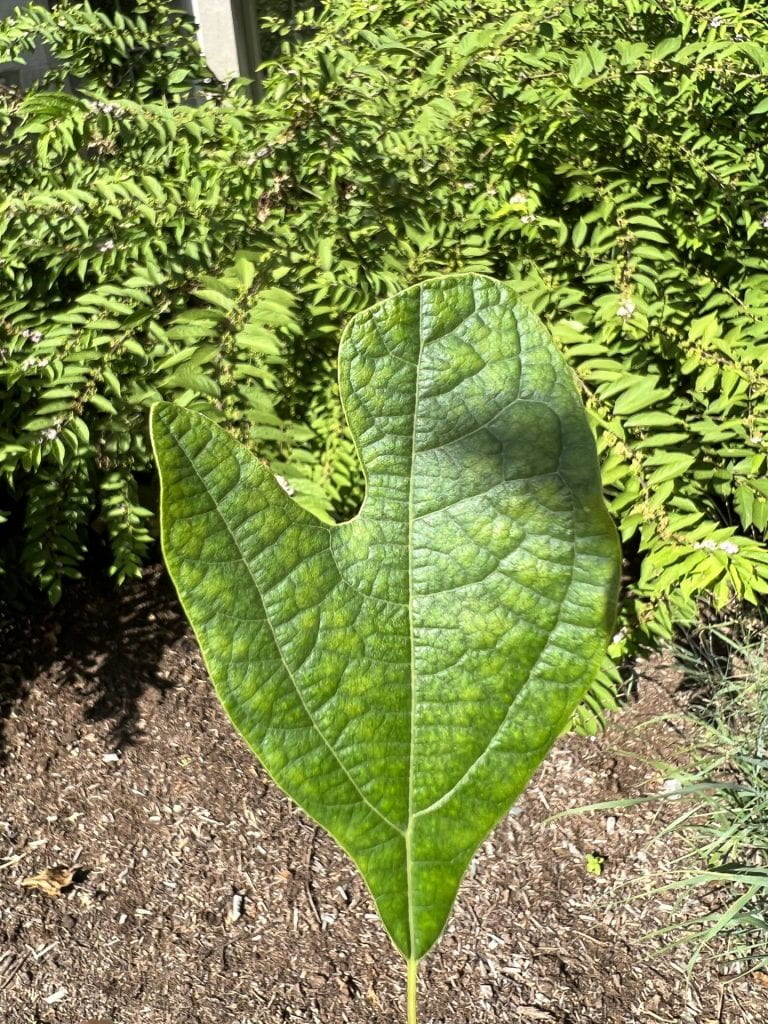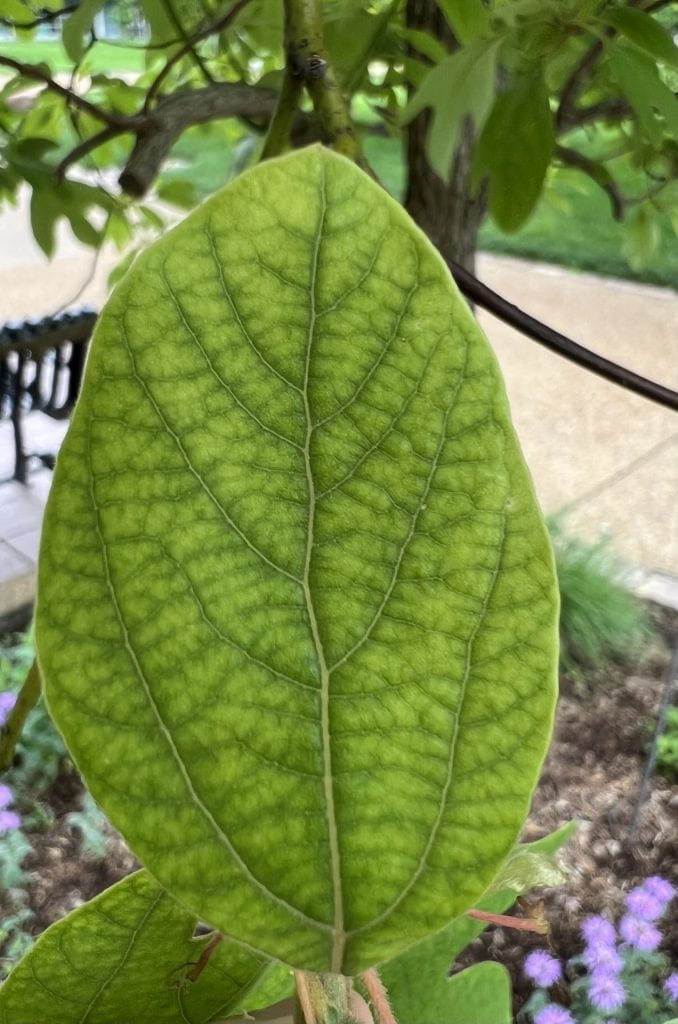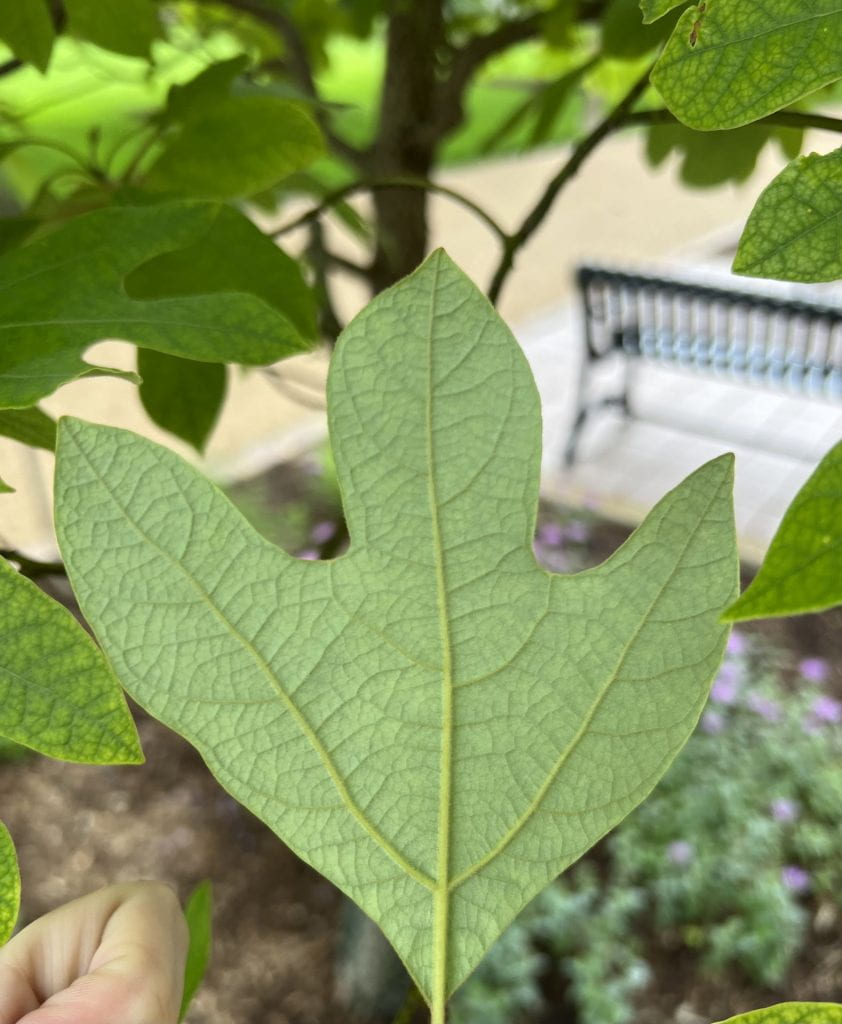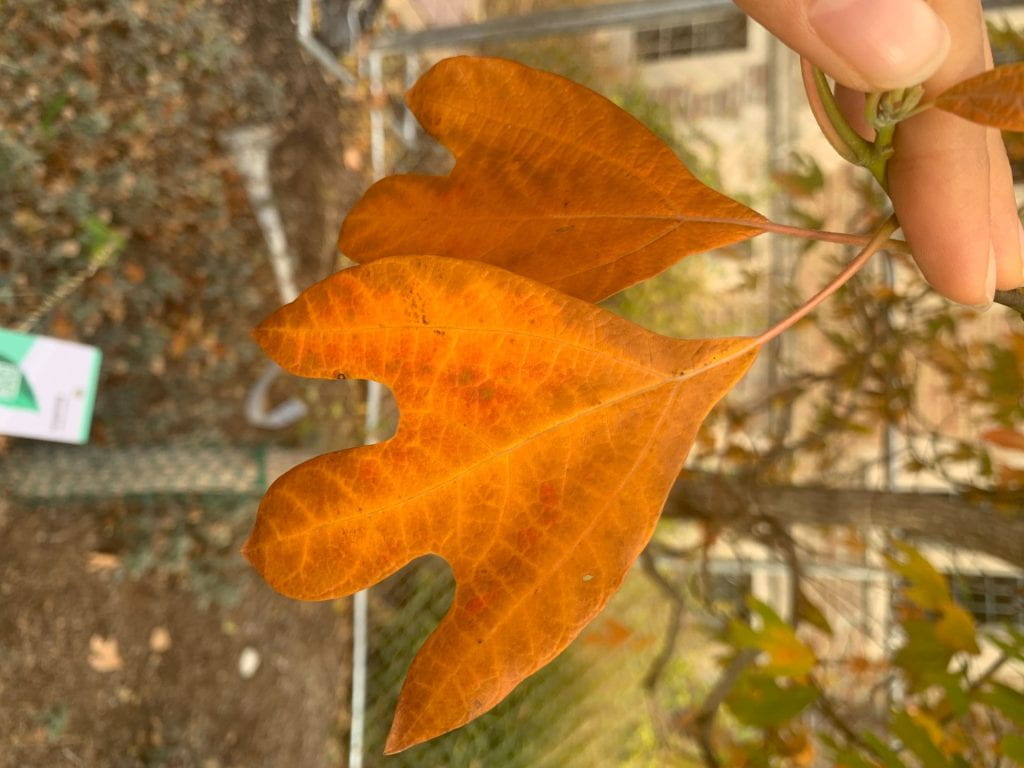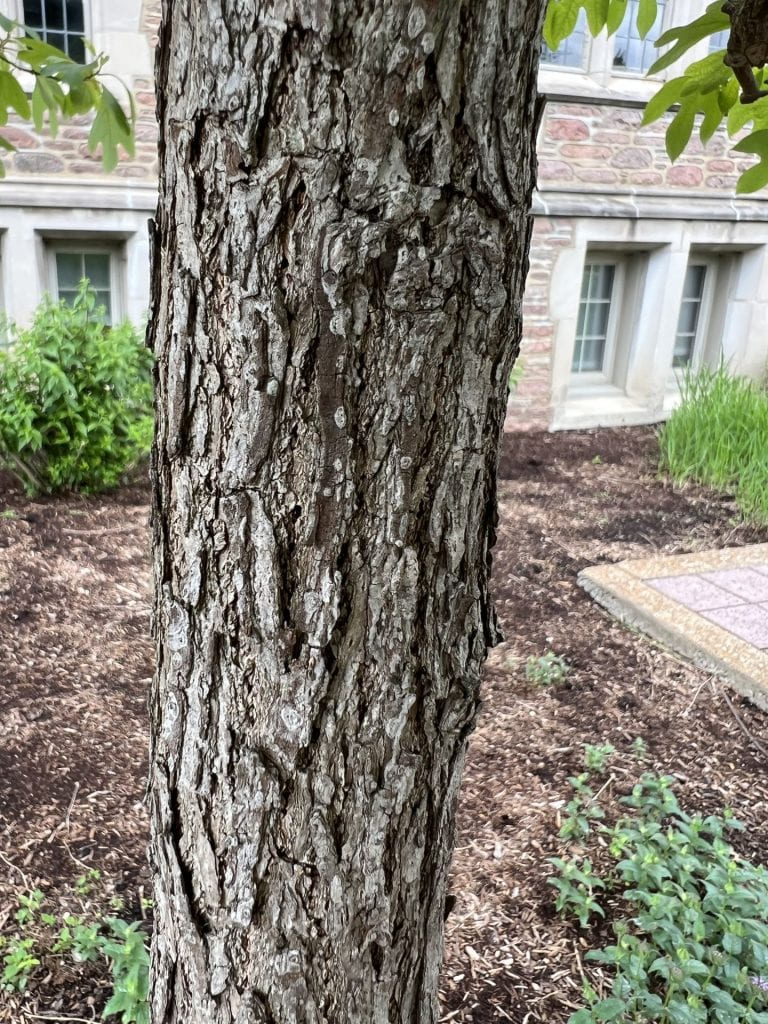Sassafras
Arbor Walk #30, TreeKeeper ID #1516
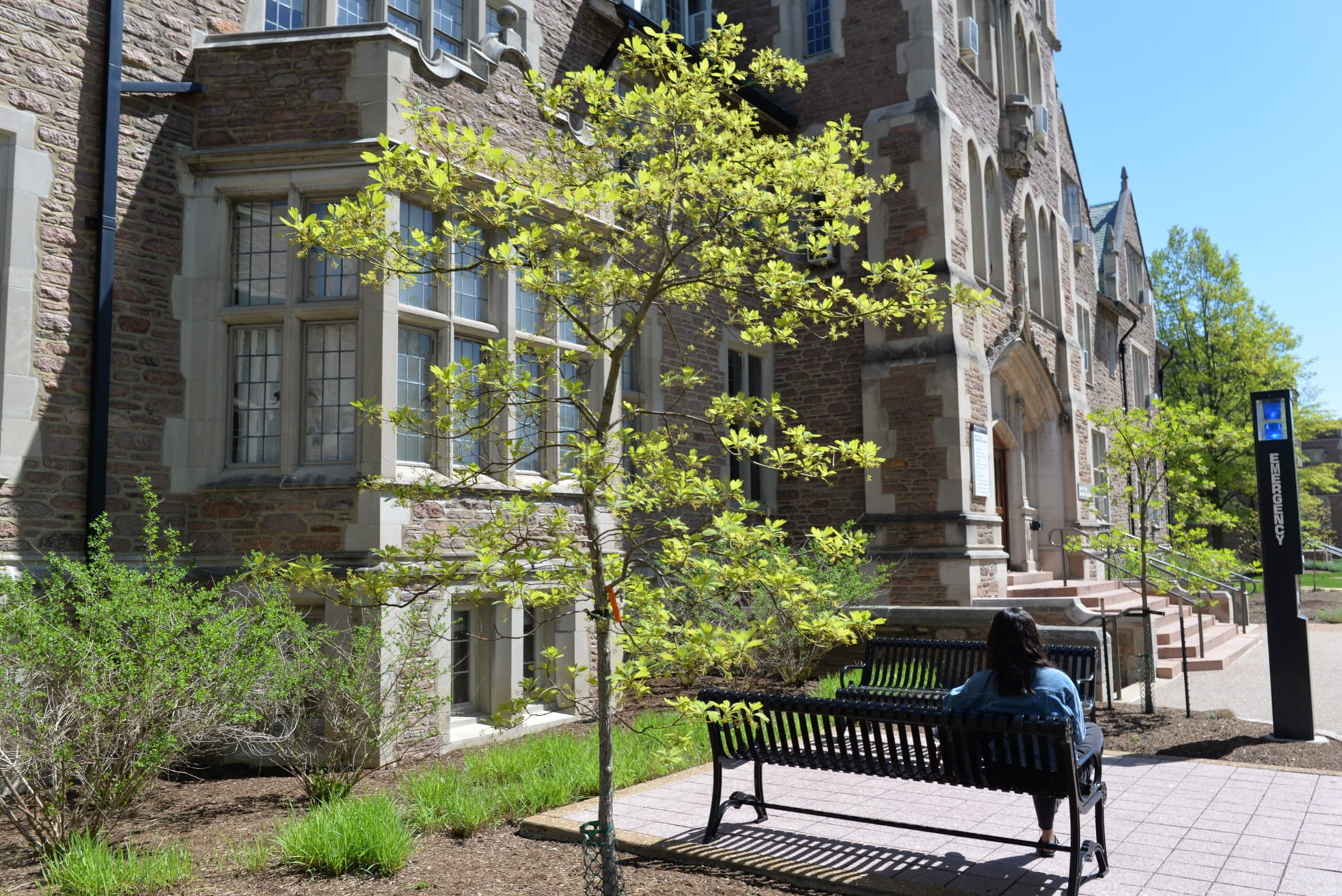
This Missouri native tree is capable of producing clones from its sprawling root system, allowing it to create genetically identical colonies. It has leaves that emit a spicy fragrance when crushed. An interesting feature of the Sassafras is its uniquely lobed leaves. The number of lobes on a leaf range from none up to three, when on most trees the number of lobes stay uniform throughout. Sassafras leaves had been used for centuries as a healing oil and as a flavoring agent, although recent work has found that the oil may have carcinogenic compounds. This has resulted in the banning of sassafras oil products across the US.

GPS Coordinates
N/A
Percent Concrete
N/A
Distance to Buildings
| Year | Close Building #1 | Close Building #2 | Close Building #3 |
|---|---|---|---|
| 2020 | Women’s Building, 6.26 m | Wrighton Hall, 16.8 m | Louderman Hall, 60.25 m |
Distance to Other Species
| Year | Close Species #1 | Close Species # 2 | Close Species # 3 |
|---|---|---|---|
| 2020 | Pin Oak, 7.01 m | Sassafras, 7.45 m | Sassafras, 7.94 m |
Standard Measurements
| Year | Height (m) | DBH (cm) | Caliper (m) | Crown Diameter N-S (m) | Crown Diameter E-W (m) | Average Crown Diameter (m) |
|---|---|---|---|---|---|---|
| 2020 | 3.9086 | 4.6 | N/A | 2.04 | 2.13 | 2.085 |
| 2023 | 5.35 | 7 | N/A | 3.36 | 3.58 | 3.47 |
Nests and Pests
| Year | Description |
|---|---|
| 2020 | 1 bagworm |
Leaf Identification
Sassafras leaves can be highly variable in shape; they may be entire (no lobes), bi-lobed, or tri-lobed. In any case, they are dark green above and yellow-green below, with capillary veins that may be darker than the surrounding leaf. The margin is smooth. The leaves are alternately arranged on the stem and have a spicy fragrance when crushed.
Twig and Bud Identification
The twig is greenish-brown, with a textured feel and no visible lenticels (pores). The winter leaf buds are ovate, peach-colored, and multi-scaled. The flower buds are similarly colored, but slightly more oblong and much smaller.
Bark Identification
The bark of Sassafras has light gray-brown plated scales that reveal darker brown layers underneath. These plates create large furrows.
Fruit Identification
Since the Sassafras is dioecious, its fruit is only produced from female trees. The fruit is a drupe; it is dark blue in color and globular in shape. It is held on a bright red peduncle with a cupule at its tip. The fruits may be in small clusters, but often the individual stems of each fruit are elongated. The fruit ripen in summer.
Flower Identification
The flowers emerge from around the new leaf growth at the terminal bud. The flowers are in small racemes that form a larger dome of small green-yellow flowers. These flowers are six-petaled. Sassafras is dioecious, so male and female flowers are on separate trees. The flowers bloom in spring.


